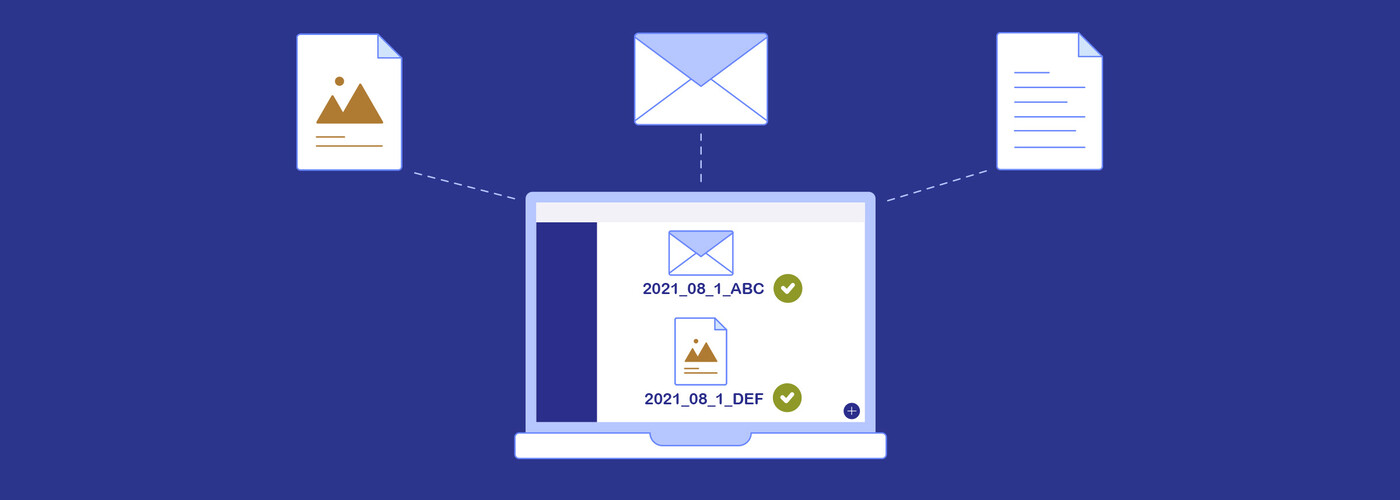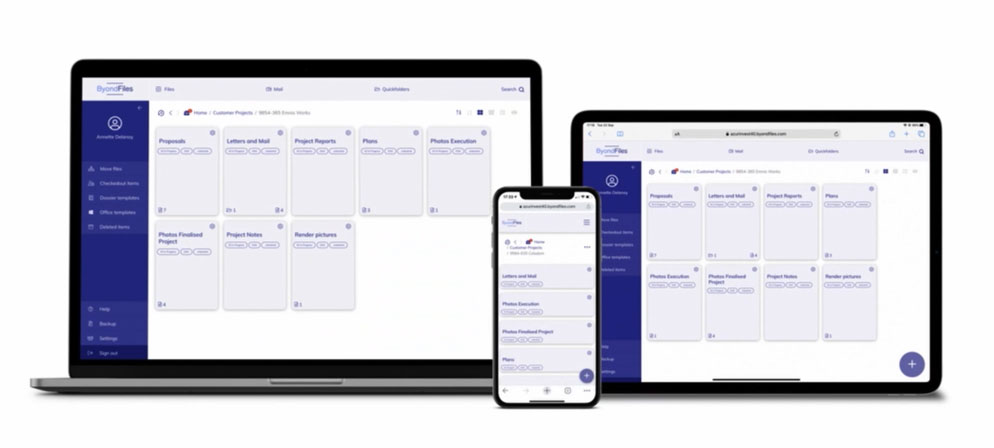
Optimal file naming conventions for improved productivity & collaboration
Digital file names are rarely consistent across an organisation. We often end up with a multitude of files; different versions made by different collaborators all using their own ad hoc ambiguous naming styles. This results in a situation whereby it becomes extremely difficult to keep an overview and quickly identify the document we are actually searching for.
It is thus crucial for any company to create a digital archive that can easily be consulted and navigated. Digital decluttering starts with a clear and consistent file naming strategy. Discover our naming tool.
Naming digital files
Effective information management starts with a solid basis, namely well-defined agreements on the naming of documents. Clearly named files make it easy to understand and retrieve content when needed. Suffice to use a consistent naming method, which comprehensively describes the content of files, in order to create a self-explanatory archive where files can easily be found.
When such a strategic file naming convention is used across the board, it is possible to know the contents of a document without having to open it. Even if all files would be gathered in one folder, as long as the naming approach is consistent, you would still be able to easily navigate the content.
Defining a Naming Convention
How to define your own method for naming documents? Whether for your personal records or those of an entire organisation, there are a number of guidelines that can help us to outline an effective file naming strategy.
First of all, it is vital that the structure of file names is logical to you and your colleagues. Which elements should be included in the file names and in what order exactly? What information is essential and provides sufficient differentiation between the various documents? These are some of the questions you should ask yourself when establishing naming rules.
A proactive naming approach can create a workable repository for years to come. Aim for a system that will be applicable for decades, even after you have left the company. If new coworkers can easily find documents within this system, then you have likely created a protocol that will stand the test of time and is appropriate for the organisation.
Useful tips for naming files
- Adding a date to the beginning of a file name is a simple yet effective initial form of categorisation. If the name of every document begins with YYYYMMDD or YYYY_MM_DD (year month day), it immediately becomes clear when the document was created. This date element allows users to quickly sort files chronologically.
- Obviously, any naming method needs to be tailored to the company’s own needs. If you want to be able to quickly distinguish the files from colleagues, then it makes sense to also incorporate initials. If your organisation is mainly project driven, then starting a filename with the project name - or number - might be a more efficient method.
- Other useful elements that can be included are: the name of the customer or partner, the type of document, the language, a description of the content, etc.
- In order to save multiple versions of the same document, we can use version numbers by adding v1, v2, v3, etc. The name of the document stays the same, while the version number allows us to quickly spot the most recent version.
Keep it short, keep it clear
Even though it is important to include useful and differentiating elements in our file names, we should however not go overboard with the length of these. Excessively long file names can cause software compatibility issues. It is therefore wise to use abbreviations where possible while also avoiding special characters. Best practice is to use a mix of capital and lowercase letters, as well as using dash and underscore characters as separators.
Below is an example of what this could look like for a given naming convention:
- [YYMMDD]_[Initials]_[Project]_[Description]_[Version]
- 210631_JS_ProjectX_pitch-deck_v1.pdf
Don’t assume, but rather automate
The above guidelines and examples form a good basis for an efficient and clear naming method for your digital files. There is one drawback however: when implementing such a protocol, we assume that all participants are familiar with these rules and adhere to them. In practice however this is far from certain. A slightly different abbreviation or even just a small typo can make the entire system more ambiguous and less reliable, which in turn can negatively affect the user experience. Fortunately, there is a simple yet effective solution in order to avoid this.
ByondFiles has developed an innovative method for the naming of files
within an organisation. When setting up our digital workspace platform, we immediately determine - together with the customer - the structure and naming protocol for the overarching dossiers. These rules are then automatically applied to all the documents, guaranteeing uniform naming throughout the company.
Moreover, high resolution thumbnails make it extremely easy to identify relevant documents.
With ByondFiles your digital workspace stays neatly organised and uncluttered, while it has never been easier to find the crucial documents you need for that all-important project.
If you would also like to benefit from a platform that can drive efficiency and time savings, then please get in touch. We will happily organise an in-depth demo and explain the features that are bound to boost the productivity of your workforce.
28 July 2021

Unclutter your digital workspace and get more done ...
With ByondFiles, you save time and everything is in order. Book a demo and find out for yourself.
